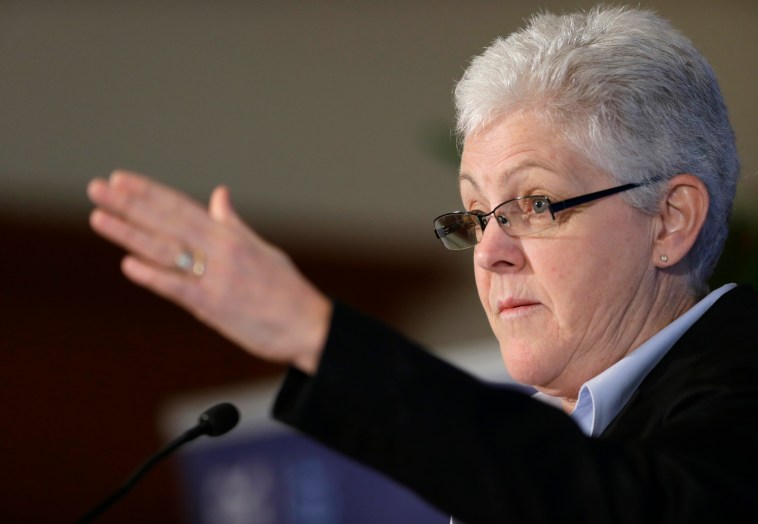President Obama’s nominee to head up the Environmental Protection Agency (EPA), Gina McCarthy, is awaiting a confirmation vote. Senate Republicans may still filibuster. The agency’s reliance on “secret science,” long a concern for the role it has played in EPA’s decisions, is finally emerging.
Videos By Rare
She almost didn’t make it out of the Environment and Public Works committee. Wisconsin Republican Sen. John Barrasso spoke on behalf of the Senate GOP regarding why they were boycotting her nomination, saying “What we’re simply requesting is access to the scientific data and reasoning behind the justification for expensive new rules…”
Questions over how EPA justifies new rules and the science it uses were raised in 1994 under President Clinton when the agency began considering new air quality rules regulating airborne fine particulate matter – i.e., soot and dust much smaller than the width of a hair. It claimed the rules were needed to prevent 15,000 people from dying prematurely every year.
Yet the EPA’s claim about the premature deaths hinged entirely upon epidemiology (human population) studies that were of dubious reliability for a number of reasons. When the EPA’s own science advisors asked then-EPA administrator Carol Browner to obtain the raw data so that independent researchers could replicate the studies, she did nothing.
Two years later, the EPA proposed new air quality rules for fine particulate matter, which prompted an industry group to file a Freedom of Information Act request to gain access to the data. The EPA refused the request, claiming it didn’t have the data.
In February 1997, EPA made a pro-forma request to Harvard researchers for some of the data. They refused. Then-chairman of the House Commerce Committee, Virginia Republican Rep. Tom Bliley got involved, sending Ms. Browner a curt letter to get the data that the agency had paid for.
Mary Nichols, who was air chief at the time, responded to Rep. Bliley stating that because the studies had already been published in peer-reviewed journals, “We do not believe… there is a useful purpose for EPA to obtain the underlying data.” The raw data — how they arrived at their conclusions — continued to be unavailable.
In 1998, President Clinton signed a budget bill that included a provision inserted by Alabama Republican Sen. Richard Shelby requiring that federal agencies make available to the public raw data used to support federal regulation.
Yet when I subsequently requested the data from the EPA in May 1999, the agency refused claiming that it did not “own” the data. It said the Harvard University researchers did, and so could not compel its production — an exceedingly lame excuse since the EPA funded the researchers in the first place and would continue to fund them for years to come.
EPA then tried to defuse the issue by announcing that the supposedly “independent” Cambridge, Mass.-based Health Effects Institute (HEI) would have access to the data and would attempt to replicate the study findings.
But as 50 percent of the HEI’s funding came from the EPA and the HEI relies on EPA-funded researchers, it was no surprise when in 2001 it claimed to confirm the results of the studies — and refused to release the data.
The science behind particulate matter remained secret. In 2011, the Obama EPA issued two major anti-coal rules — the Cross State Air Pollution rule and the Mercury Air Toxics Standard — both of which depend on the same sort, if not the exact same secret data the EPA has been using since the 1990s. By then, however, EPA had inflated the lives supposedly saved by its fine particulate matter rules to as many as 290,000 per year.
In September 2011, Maryland Republican Rep. Andy Harris of the House Science Committee wrote to EPA air chief Gina McCarthy asking for the data. He never even got a response. In March of this year, Louisiana Republican Sen. David Vitter and Texas Republican Rep. Lamar Smith again asked Ms. McCarthy for the data. Again, no answer.
Ms. McCarthy should only be surprised by Senate GOP’s rejection of her nomination to the extent that a line has been drawn in the sand. It, of course, remains to be seen how deep that line is.
The good news on the science is that, after all these years, I have obtained data that supersedes in quality and quantity what EPA has been relying on all these years. Analysis of the data performed by my colleagues and myself entirely debunk the EPA’s claims about fine particulate matter being associated with premature death.
We are preparing our results for publication at which time we will make our raw data available on the Internet so that anyone — including the EPA and its cabal of black box scientists — can attempt to replicate our results without even going to the trouble of making a formal request.
That is how the scientific method should operate. It’s a pity for Gina McCarthy that she has to learn the hard way.
Steve Milloy publishes JunkScience.com and is a senior fellow at the Committee for a Constructive Tomorrow. Follow him on Twitter @JunkScience.

